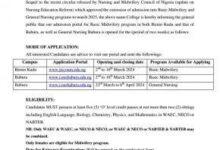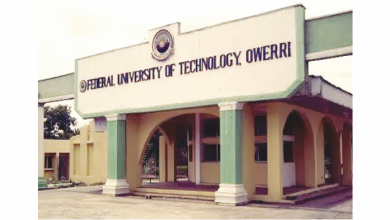
WAEC Syllabus for Leatherwork
WAEC Syllabus for Leatherwork. WAEC Syllabus for Leatherwork is available for all candidates who want to participate in the examination. The West African examination council (WAEC) has officially introduced a syllabus that will guide all the WAEC candidates who wish to write the WAEC examination this year. For a very successful WAEC Leatherwork examination for this year, you need to check out the available areas of concentration. It has been divided into sections with chapters, followed by the topics to be covered in preparation for the exams. In the WAEC Syllabus for Leatherwork, you will also see the format of how the WAEC Leatherwork questions will be presented. Jamb form
There are always 3 sections to answer questions from. Paper 1 is objective 2 is essay questions and 3 contains practicals. Where paper one (1) carries 50 minutes for 40 marks (2) carries 2 hours for 60 marks while paper three (3) carries 80 marks for 5 days. WAEC Syllabus for Leatherwork
👉 Relocate to Canada Today!
Live, Study and Work in Canada. No Payment is Required! Hurry Now click here to Apply >> Immigrate to Canada
This WAEC syllabus is for both the O’level WAEC and General Certificate Examination (GCE) candidates. Final year students in the senior secondary school level and external candidates are eligible to make use of this syllabus and prepare ahead of the examination. Dollar to Naira Rate
See the full detailed information concerning the WAEC Leatherwork Syllabus below.
PREAMBLE
A course in Leatherwork is premised in the art of preparing animal hides and skins into leather (tanning), and using appropriate tools and equipment to produce leather articles, eg. footwear, receptacles and a host of other leather crafts. The study of leatherwork provides pre-vocational training. It is a component of Visual Arts which aims at developing self-esteem, patriotism, cultural awareness, and Pre-technical proficiency of its students. In addition, it equips them to attain vocational and entrepreneurial skills for national development as they go through Senior High School.
AIMS AND OBJECTIVES
The aims and objective of the leatherwork examination syllabus are therefore to test:
(1) examine candidates’ knowledge in the theory and practice of leatherwork.
(2) test their mastery in the use, care and maintenance of leatherwork tools and materials.
(3) assess their competence in the various leatherwork techniques.
👉 Relocate to Canada Today!
Live, Study and Work in Canada. No Payment is Required! Hurry Now click here to Apply >> Immigrate to Canada(4) test students’ pre-technical proficiency in the handling of both natural and synthetic leathers. Pounds to Naira
(5) examine their ability to cost, price and market leatherwork products.
(6) to assess their knowledge of career opportunities and entrepreneurial development in the leatherwork industry.
(7) to test the knowledge of students in appreciating and interpreting leatherworks.
SCHEME OF EXAMINATION
There will be three papers, Papers 1, 2 and 3 all of which must be taken. Papers 1 and 2 will be composite paper to be taken at one sitting.
PAPER 1: Will consist of forty multiple-choice objective questions all of which must be answered within 50 minutes for 40 marks.
PAPER 2: Will consist of six essay-type questions. Candidates will be required to answer four questions within 2 hours for 60 marks.
PAPER 3: Will be two practical projects out of which candidates will execute one within five days, working for six hours each of the days. The paper will carry 80 marks.
The questions will be sent to the candidates two weeks before the execution period for candidates to study. Designing of sketches and preparatory notes should also be done within the two weeks prior to the execution of the project.
These will carry 20 marks. The total mark for the paper is therefore 100.
DETAILED SYLLABUS
The course in Leatherwork at the Senior High School level of study should include its history, the use of tools and materials in its industry and the production of its tools with items in the environment. The examination will cover all aspects of the teaching syllabus, both the theory and the practical sessions, and shall include the following: Jamb Result
(1) Introduction to Leatherwork:
The meaning of leatherwork, history of leatherwork and the rationale for studying leatherwork. Clarification of the uses of leather.
(2) Leathers and their Use.
(i) Leather: Characteristics of leather, Types of leather, structure of skin and hide. Chemical composition of leathers source and preparation. Other leather Materials eg. Synthetic, Offcuts.
(ii) Uses: Containers, Body Items, Household items, Religious/Magical items, Industrial items, sports, Defence and protective, Music and Entertainment, Animal Accessories.
(3) Materials, Tools And Equipment
(i) Materials: Definition, Types and Uses.
(ii) Tools and Equipment: Definition, Sources and Preparation. Care, repair and Maintenance
(4) Classification and Uses of leather.
Classification: Hides eg. cattle, equine, deer etc
Skins eg. goat, sheep, reptiles etc.
Kips. eg. rabbit, squirel, skunk etc.
Uses: Hides use for industrial and heavy items. eg. Industrial belts, boots etc.
Skins use for foot wears, garments, musical instruments etc.
Kips for fancy goods eg. gloves, headgear etc.
(5) Career Opportunities in Leatherwork
Leather production (tanning)
Leather technologist, Leather art/decoration/restoration.
Leather product dealer, Leatherwork tutor.
Dealing in leather accessories, equipment and tools.
Designing and producing leather items eg. cases, bags,
shoes etc., Leather upholstery.
(6) Designing
Definition, Elements of Design, Principles of Design.
Design Environment: source of design ideas
Design Process. eg. Computer aided designing, Preliminary design.
(7) Production Of Leather Articles:
Classification of leatherwork
Making of models.
Decorative techniques Npower Recruitment
Production techniques
Finishing techniques
Care and maintenance of leather articles, Packaging.
(8) Exhibition Of Products:
Meaning of exhibition, types of exhibition, importance of exhibition, planning of exhibition, preparing for exhibition, mountain exhibition.
(9) Terminologies In Leatherwork:
Current developments in leatherwork.
(7) Entrepreneurship Skills
Areas of enterprise in leatherwork, exploring, siting and managing. Avenues for financial and technical support.
Costing, pricing and marketing.
Check and Confirm: How much is Dollar to Naira Pounds to Naira Rate Today







